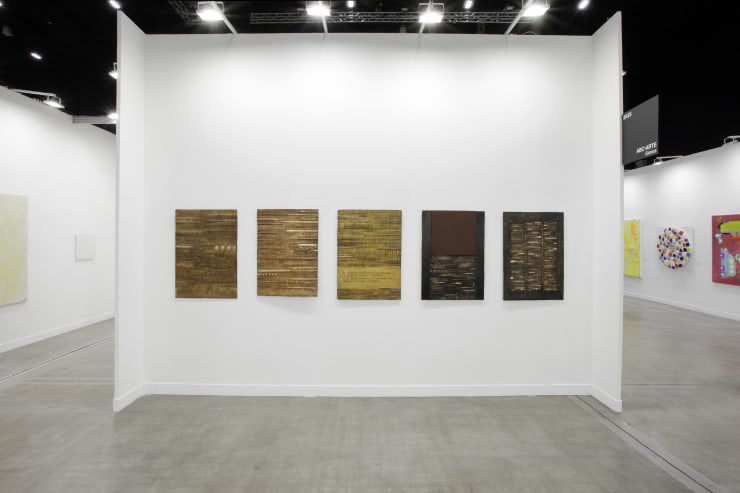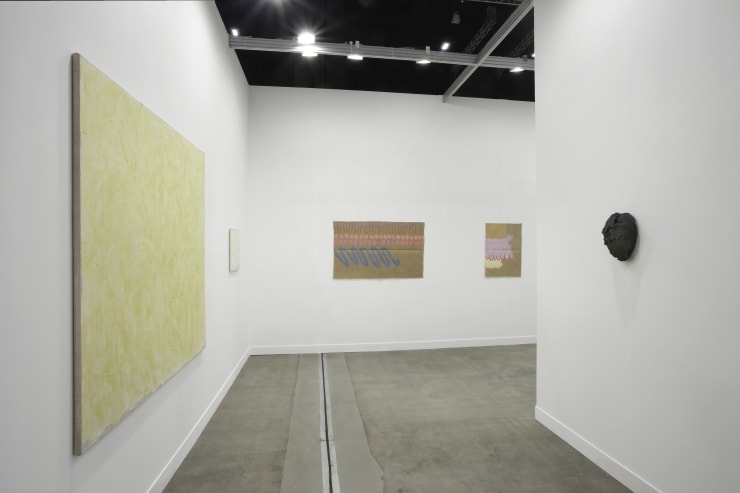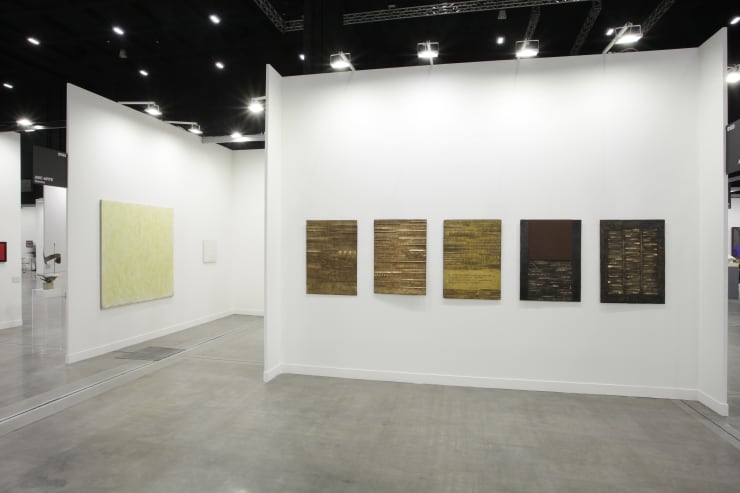 Pad. 3, booth B133
https://www.miart.it/
Pad. 3, booth B133
https://www.miart.it/
To scratch, draw, write
ABC-ARTE presents a concise dialogue between the works of the artists presented in the gallery’s recent programme: Giorgio Griffa, Arnaldo Pomodoro, Tomas Rajlich, Nanni Valentini and Michele Zaza. Each has developed in his own career a different poetic and reflection on the intrinsic value of the sign.
The painting of Giorgio Griffa is based more on the interrelation of the elements than on the procedure, and in line with the Italian tradition it has a sense of beauty derived from the poetic, the sensuality of the colours and the seduction of the forms. Griffa’s mode of action, his very human differentiated and modular repetitions of the fundamentals of painterly discourse (point, line, surface, material) are very close to the conditioned reflex and practical habitude whose roots lie in the very physiology of painting.
Tomas Rajlich started out from a nucleus of works characterised by an industrial look and a modular quality. After his participation in 1975 with Brice Marsden, Robert Ryman, Gerhard Richter and others in the memorable exhibition Fundamentele schilderkunst / Fundamental painting at the Stedelijk Museum Amsterdam, Rajlich has proceeded to explore the combination of the impersonal, the gesture and the creative force of light.
Rajlich’s works are generally monochromes characterised by sober tones. The lines of colour are in dialogue with the geometric grid, a basic element in Rajlich’s inquiry, or are in antithesis to it. ABC-ARTE exhibits a selection of recent works, such as the canvas Hotel, in which the artist combines the light and diverse variations of intensity and colour, radically modifying the surface of the painting and bringing out the two-dimensionality of the object.
For Arnaldo Pomodoro the sign counts in itself, distilled in a plastic unit where nothing matters except graphein degree zero. The artist’s hypothesis of the sign has a structural value, in which formal identity is achieved by the weaving and unfolding of the spatial development in time in a fully and exclusively plastic dimension.
The sign does not go beyond offering itself, establishing an open, unforeseeable, radiant environment in a mood akin to that which regards every manmade object as a text, from an incised tablet to sculpture and architecture, and as a sign every condensation of thought begins to be determined concretely as an essential formative passage in the absence of any possible codification and any signifying intention.
From Pomodoro’s recent one-man show in ABC-ARTE will be exhibited the sculpted leaves of Cronache, 1976, the first perfect synthesis and clear indication of a method that Pomodoro affirms as his very own through the taut, dynamically woven fabric of signs and the intellectual and amicable indications of the dedications.
Nanni Valentini is one of the most singular and vivid personalities in postwar artistic inquiry and is recognised as one of the leading ceramic sculptors. He tackles a complex equation: the territory of the poetic is not (only) the word, but the earth, its indifferent presence that can be inhabited by signs of the natural and human worlds, on a path that never becomes completely verbal, except as a language of knowledge that the earth knows better than words.
The profound poetic of Valentini’s works will be represented by the sculpture Deriva (Onda), accompanied by Volto di Edipo and a selection of Trasparenze, on which ABC-ARTE recently published a monograph.
Michele Zaza His inquiry springs essentially from the idea that ‘art does not offer possible alternatives to the human condition, but is on the contrary the result of this condition’ and, as such, is perpetuated in human thought. What Zaza devises is a symbol-charged atmosphere in which the body or the face are in contact with a secret scenario constructed from everyday objects (breadcrumbs, cotton wool, cushions) and archetypal sculptural presences. The face, male or female, is often painted with colours that refer to the earth and the sky – brown, blue, white. His recent solo show Michele Zaza. Absolute traveller marks the beginning of the collaboration between Michele Zaza and ABC-ARTE.















